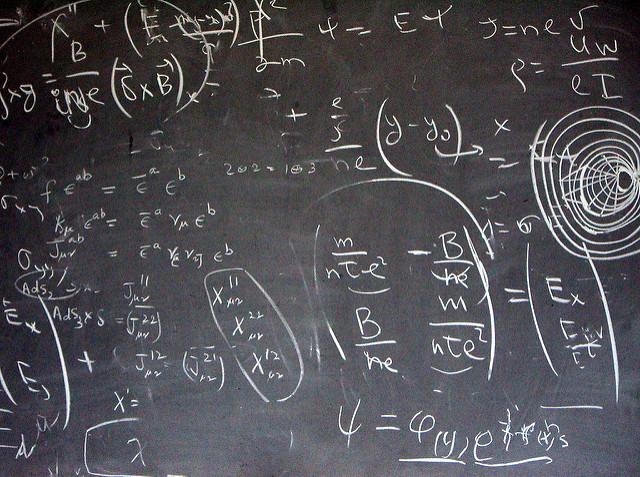Every morning I’m quite sure that two people wake up thinking, ‘thank goodness Nic Stuart isn’t a theoretical physicist’. I’m one. The other is my science teacher.
The point of this revelation is that when theoretical physicists observe phenomena (they never simply ‘see things’), they draw plausible deductions by noting correlations between one occurrence and another. It’s the sort of people they are. That’s why Andrew Davies and Mark Thomson’s recent (detailed, and exhaustive) post provided an interesting exploration of whether there were any meaningful relationships between more than 250,000 defence contracts released between 2007 and 2014.
I, on the other hand, am a journalist. This means first, that I’m not nearly so well paid as my theoretical physicist friends and second (and quite possibly as a directly correlated result of the first difference) I’m naturally far more bitter and suspicious. I ‘know’ the card deck’s stacked against me and so yes, I’m naturally mistrustful. Particularly of government and big institutions.
I’m certainly, most definitely, absolutely not the sort of person who’s likely to rush into print and write a gushing blog post about the fact that the system seems to be working—even if that does, indeed, appear to be the case. Instead I’ll examine exactly the same data set to search for conspiracy, duplicity, and bungling. Because I know it’s there. It must be!
So that’s why my immediate reaction on reading the Davies/Thomson post was to assume something had to be wrong. Not with their information or workings, of course, but with their conclusions. Sure, I thought to myself, the physicists might possess the data and they may, indeed, have the numbers. But it’s journalists who own the questions and the nagging doubts. So let’s give scepticism full rein…
The dataset Davies and Thomson lay out is certainly smooth. So too is their conclusion. I suspect that (like me) they’d expected, maybe even hoped, to find anomalies: that the Army, Navy and Air Force would spend up big whenever they got the chance and, as a result, the dollars (and the spending) wouldn’t be predictable and would appear in random, spluttering bursts. It turned out that isn’t the case. It seemed to take them rather a lot of words, graphs and numbers to explain their point and come up with a null result, although that’s always part of the problem with scientists. They feel the need to explain things beyond doubt and then waste time ‘interrogating their findings’ to ensure they’re ‘robust’. That’s something that no journalist ever worries about.
That’s for a very good reason. We know that if the system seems to be working, then it’s been designed to answer the wrong question.
Let’s just take it as read that the scientists didn’t discover any glaring anomalies or evidence of anything beyond the mundane. The point is that Davies and Thomson were looking for unexplained deviations; the incongruous; inappropriate expenditure. They haven’t found it and are thus happy. Well, as happy as a couple of physicists can be when they’re given data-sets and x and y axes to play with.
And who can doubt the evidence? The ADF certainly looks today to be better prepared for potential challenges than possibly ever before in peacetime. In the late 90s we were lucky to be able to get away with carrying off the intervention in East Timor without disaster given the parlous state of the forces.
Today, however, it’s a very different story. No one can doubt that there’d now be a real capacity to intervene decisively in most plausible scenarios that would require the use, or threat, of force. Similarly when it comes to contributing to a multi-national force. The extended deployments in the Middle East have given all three services considerable operational experience and familiarity with the challenges of working with allies. Finally, the military has also demonstrated it has the capacity to keep the continent’s maritime border secure. These are certainly remarkable accomplishments and these achievements fit into the broader image drawn from the dataset.
Nevertheless, it’s with exactly that picture that the journalist in me wants to quibble. If we’re prepared for these challenges then it seems quite clear that these aren’t the ones we’re going to have to face in the future. And the danger is that, if we sit around and pat ourselves on the back about being prepared to face the predictable challenges, the big new ones are going to suddenly catch us unawares.
Now I’m certainly not suggesting any complacency exists, least of all amongst the physicists at ASPI. The gaps, however, are real and worrying. Our inability to effectively cope with a potential terrorist incident is being chronicled daily in the Sydney newspapers. There is dangerously little social resilience.
Excellent work has recently been published by retired Air Vice Marshal John Blackburn demonstrating Australia’s vulnerability because of dependence on oil stocks and other work by John Blaxland on the desperate lack of regional language skills and understanding that we exhibit as a society. And those two deficiencies are just ones detailed by people whose names begin with the letter ‘B’; imagine how many others we could list by the time we got to ‘S’.
We need to focus on addressing these issues urgently, before it’s too late.
